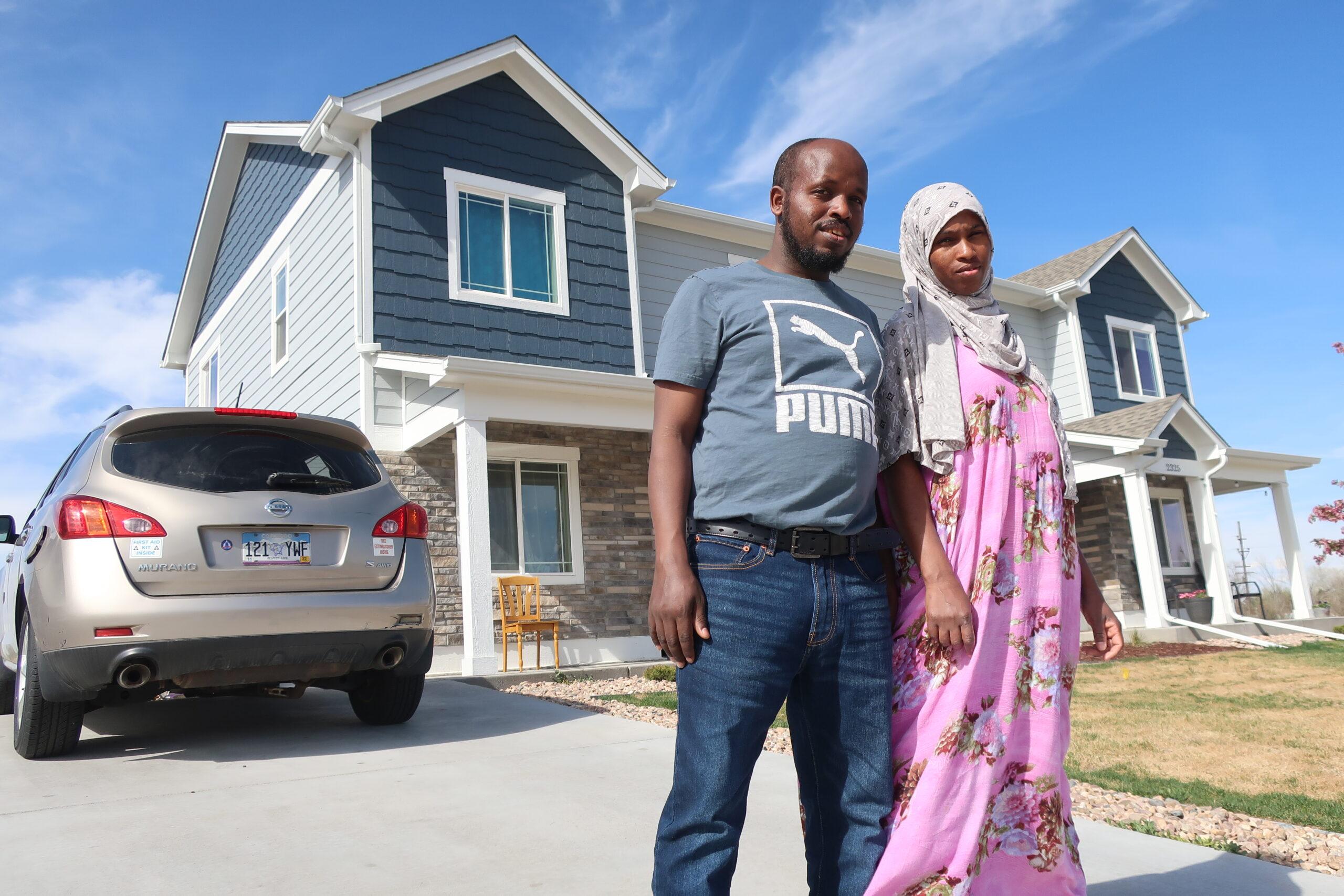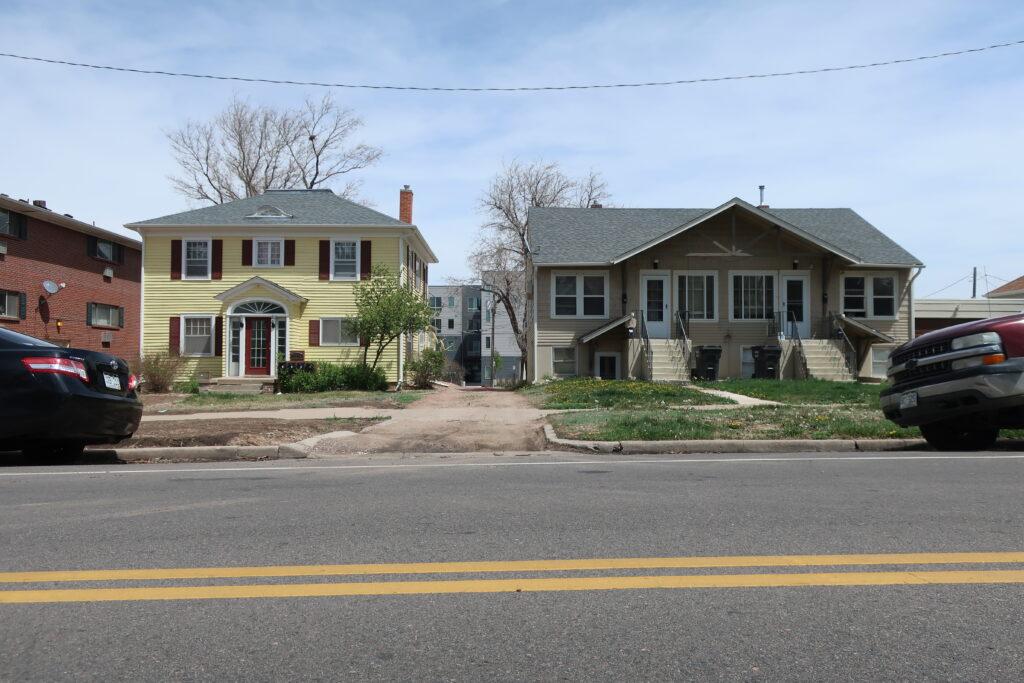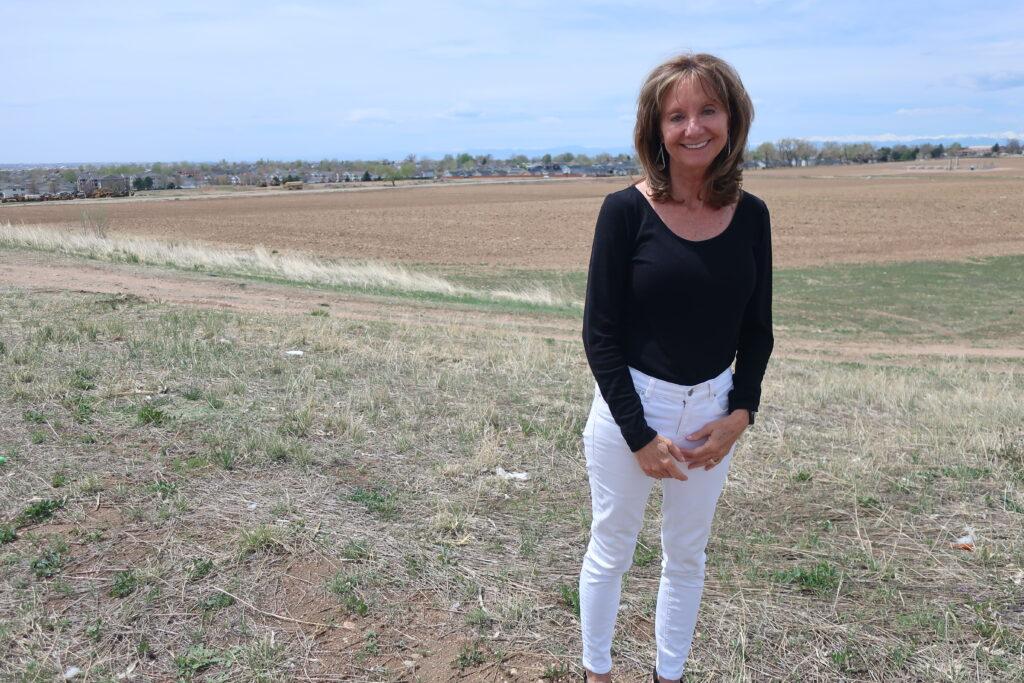
Muktar Hassan never thought he’d be a homeowner. The 37-year-old immigrant from Ethiopia and father of four earned a decent wage at the local meatpacking plant. But not enough, he said, to afford a home in the Greeley area.
But one day last winter, his heart pounded as he picked up keys for a shiny new four-bedroom duplex in nearby Evans.
“I felt very excited,” he said. “I very emotionally cried, you know? Because I’m happy to get this house.”
Hassan purchased the home with the help of Greeley-Weld Habitat for Humanity. The two-story, blue- and slate-colored duplex, just a few miles from the South Platte River, is on a small lot adjacent to a handful of other modestly sized Habitat-built homes.
Leaders in nearby Greeley hope to see many more neighborhoods that look like this in their city, too. The City Council last year approved an overhaul of its development code aimed at keeping Greeley affordable by making it easier for developers to build a wider variety of housing — like duplexes, apartment buildings and townhomes — on smaller lots across more of the city.
“We're trying to come up with creative ways to still make this an affordable community, a community that serves all demographics,” said City Manager Raymond Lee III.
Greeley’s reputation for affordable housing is growing increasingly shaky. It’s still cheaper than other Front Range communities, but it’s no longer cheap. The median price for a single-family home in Weld County hit $505,000 in April, a 15 percent year-over-year rise, according to industry data.

City leaders hope a larger number of smaller homes could help slow down those increases. Such a move would mark a significant shift in Greeley’s growth, which for decades has been characterized by sprawling single-family houses on lots of at least 6,000 square feet. The new code reduced minimum lot sizes in low-density zoning districts to 4,500 square feet and allows for even smaller lots in medium- and high-density areas.
The updated code is meant to encourage infill development in older parts of the city and could also shape new growth on its western and northern boundaries to be denser than it would’ve been otherwise, Lee said.
“We have the land and we have the water for growth, but we want to be smart about it,” he said. “We just don't want to build and continue to build and just use all those resources up.”
The City Council’s adoption of the new code last year garnered little public attention. Public feedback will likely increase as specific projects start to move through the pipeline — possibly in opposition. City officials will listen to existing communities through the process, Lee said, while also staying committed to its new vision for growth.
“A fast-growing community is going to experience those kinds of conflicts,” he said, adding: “We want to make sure that we're able to compete with other communities in the Front Range.”
A new affordable housing community will take advantage of the new rules.
On Greeley’s south side, Greeley-Weld Habitat for Humanity is planning a massive new development called Hope Springs that could eventually hold nearly 500 homes. About 300 will be market-rate and affordable apartments, and about 175 will be affordable for-sale homes. They will be located near a public transit line and grocery stores.

“The financial pressures that exist for so many families in Colorado around housing will be lifted off their shoulders,” Greeley-Weld Habitat for Humanity Executive Director Cheri Witt-Brown said of the future homeowners in the development.
The new development code will allow Habitat and its builder to fit more homes on the 40-acre parcel and amenities like small soccer pitches and a child care center. Witt-Brown hopes that this project, like its nearby project in Evans, demonstrates to the greater Greeley community that affordable, dense developments are beneficial to everyone — and should be replicated.
Muktar Hassan, the Evans homeowner, said many of his friends from East Africa are hoping to become home buyers, too. He anticipates staying in his home for at least five or 10 years. But with four growing kids, he said he’ll probably have to save up for something bigger eventually.
“The future is going to be good,” Hassan said. “It’s going to be good.”








